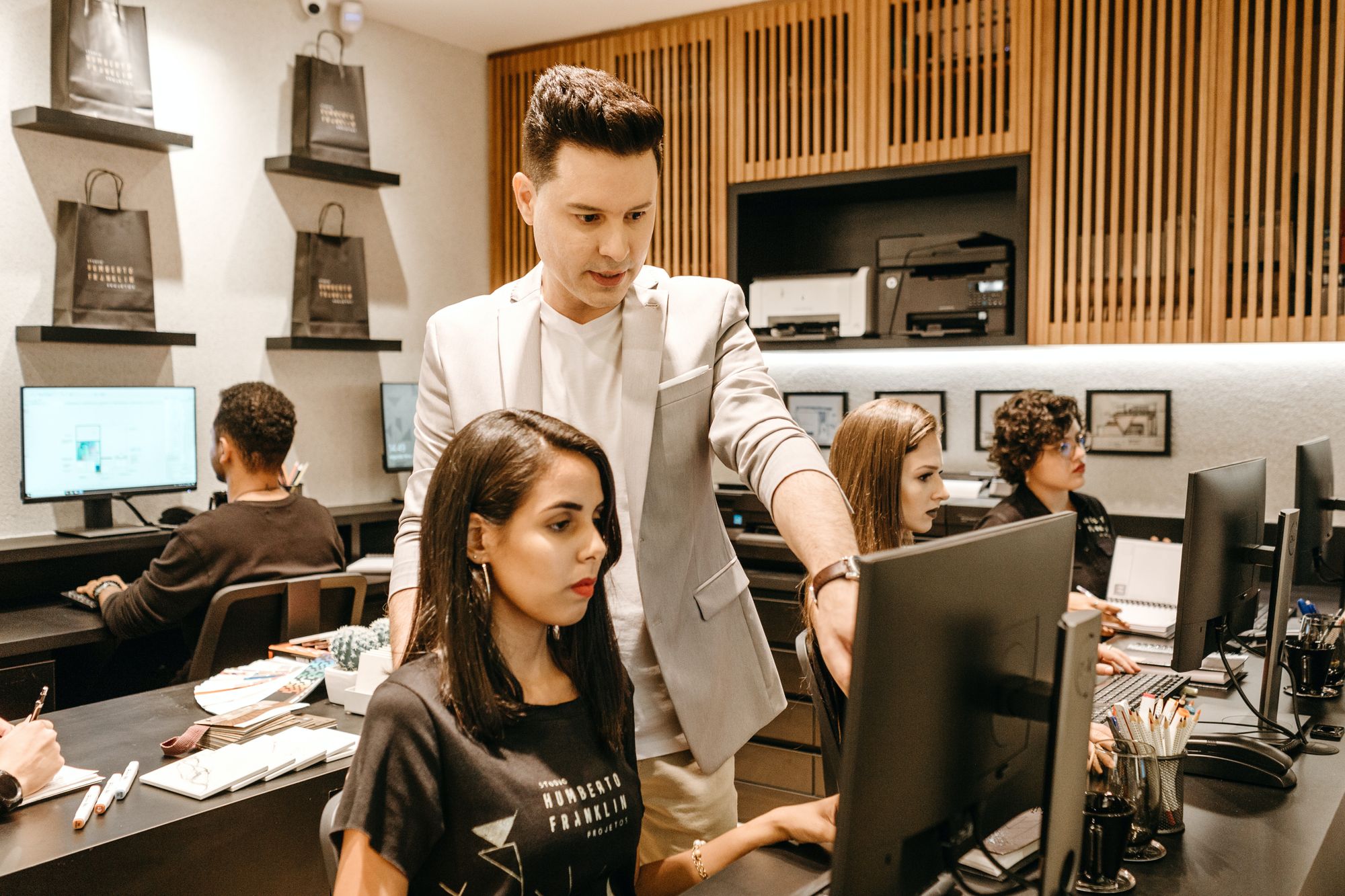Accounting for VAT is the process of keeping records of your sales, purchases, and other transactions to ensure you're charging and paying the correct amount of VAT.
This guide will help you understand:
- What is accounting for VAT?
- What are the rules for accounting for VAT?
- Why is VAT taxable?
- How does VAT work for businesses?
- Are there any accounting differences to be aware of?
- How do you calculate VAT?
- How to apply for a VAT number?
- What are the advantages of using VAT?
What is Accounting for VAT?
VAT stands for Value Added Tax. It is a tax added to the price of goods and services when they are sold. VAT aims to make sure that everyone who takes part in producing a product or service pays their fair share of tax. This means that companies and individuals can reclaim the amount of VAT they pay on products and services they buy.
Companies need to determine how much of the final price they can attribute to different costs and services in accounting for VAT. This involves calculating profit margins and defining which part of a product or service's price is attributable to individual aspects of production. The amount of tax due depends on how much value has been added by each party in the chain leading up to the sale, so some margin needs to be left for all parties along this chain.
Why is VAT important, and what's the Purpose?
The value-added tax is a tax applied to all goods and services that businesses sell to encourage them to keep track of the total cost of their products, rather than just adding a VAT at the end. In reality, though, VAT also helps governments collect more money. So when you pay your VAT bill at the end of each month, some of that money goes to your government's coffers.
VAT is a tax payable by businesses and is essentially an additional markup on the ir sales, but it can be reduced or even eliminated if business owners meet specific criteria. Companies that don't charge VAT and aren't registered for VAT are liable for an alternative tax called the output tax.
The idea behind VAT is to be transparent about how much tax you're paying on products so that you know where your money goes. VAT allows the government to capture taxes on the supply of goods and services. This means that the final product or service consumer will pay this tax. So, it is a consumption tax rather than an income tax.
This can be used in place of or in addition to other taxes such as corporate income tax and personal income tax.
How does VAT work for Businesses?
VAT is a consumption tax levied on the supply of goods and services. It may be charged to the consumer at the point of sale or included in the price. The main idea behind VAT is to make sure that all businesses pay their fair share of tax and benefit from government spending.
There are many different ways of costing goods and services for VAT purposes, but the following outlines some standard methods businesses use for their VAT calculations.
The entire costing method is the most commonly used. This involves adding all the costs the business has incurred – this includes all expenses and a margin to cover overheads and profit. The VAT is then calculated on that total amount.
The first-in-first-out (FIFO) method is an alternative to the complete costing method. Under this approach, the costs of goods are charged concerning those purchased first. In other words, if a business purchases ten items of stock at £10 each, it would charge VAT based on the cost of the first item purchased rather than adding up all costs incurred.
How do you Calculate VAT?
There are two different ways to calculate VAT. The first way is the one we have been talking about so far, known as the output method.
The second way of calculating VAT is called the input method. This method involves all the costs of producing your product, such as materials and manufacturing.
VATs are calculated as a percentage of the price of the goods or services being sold, and this is then added to the price. Businesses pay VATs to the government, and consumers pay it when they buy things. The idea behind VATs is to ensure that everyone pays their fair share of tax.
The first thing you need to do is work out the VAT rate that applies to your business. This depends on what goods and services you sell.
Use this rate as a percentage – so if it's 20%, use 0.20 for your calculations.
You can then work out the total cost of all your goods and services, including VAT, using any method you like. Then multiply that by your VAT rate.
You can calculate VAT manually, but most businesses use accounting software to do this. The calculations are complex, so accounting software makes the job much easier.
It is essential to calculate VAT because your business will be required to submit an annual VAT return, listing all the goods and services you have provided in a given year, along with the corresponding VAT charged on each.
To calculate VAT by hand, you must first determine what is taxable (in other words, what ingredients and components make up the cost of your good or service) and what is not taxable (what elements of the price you can subtract from your taxable total).
Next, you need to know how much VAT is charged on each ingredient or component. You then total all of these components together to find your total taxable amount, which represents the full value of your good or service. Finally, you deduct any non-taxable elements from this amount so that you can arrive at the final value for your good or service.
How to apply for a VAT number?
A VAT number is the unique identifier of a business and a requirement for registering all companies required to charge or collect VAT. It acts as an identifier of your business, so it's essential to know how to apply for a VAT number.
VAT numbers may be requested by selling physical goods (like clothes, shoes, food, etc.), providing certain services, or selling digital products (like books, phone apps, and online courses).
If you're unsure if you need a VAT number, look up your country's VAT regulations to determine if you have to register for one.
If you're in the process of starting a new business and don't already have a VAT number, you may have to register for one before carrying out any transactions. At this point, you'll also have to choose whether to use the flat-rate VAT scheme or the standard scheme.
Once a VAT is approved, the business owner must complete annual returns. These returns detail how much money was made and how much VAT was collected over the year from all of the company's operations.
What are the tips to consider while applying for VAT?
Accounting for VAT is an additional cost, but it has some advantages. It can help you avoid paying sales tax and gives you access to the cash VAT generated immediately. You also don't have to pay for the upkeep of a stockroom, and your administrative costs are reduced.
Accounting for VAT is complicated, so you should approach it with caution. Here are a few tips:
- Join one of the VAT associations. If you're filing monthly VAT returns, it makes sense to join one of the professional associations that prepares them. Paying membership fees will offset some of your accounting costs
- Get used to your new accounting software. You'll need to find software that integrates with your existing accounting program or works independently. This will take time and training, so plan
- Keep a close eye on your expenses. Even if you account for VAT, you can't deduct all your business expenses — only those associated with taxable goods and services. Use special accounts to see at a glance how much your business is spending on taxable items such as gas, office equipment, advertising, and utilities
Wrapping Up
VAT and VAT exemption are significant parts of the standard accounting procedure. Whether the business sells tangible or intangible goods, they have to decide whether they have to charge VAT or not. Companies can determine whether they have to apply VAT to a specific sale by using the proper rules.
Key Takeaways
- VAT is included in the price of goods, and fixed cost for many businesses, and the value-added tax is a type of consumption tax applied to goods and services. The VAT is used as a significant source of revenue for most countries, which implies that it automatically increases after inflation is considered
- In a nutshell, you have to keep records of your sales and purchases, work out which items are taxable, work out how much tax you should be charging each customer, ensure that your records are kept up-to-date throughout the year, and then submit a return to the Revenue & Customs at the end of each quarter
- The rules around accounting for VAT are pretty straightforward. You must keep records of all your purchases and sales, including details such as the date of purchase or sale, amount and type of goods purchased or sold, supplier or customer name, and address where appropriate
With the introduction of online accounting software like Deskera, almost every business owner can keep a tab on income and expenses. This helps in cutting costs and increasing revenue.
Related Articles










